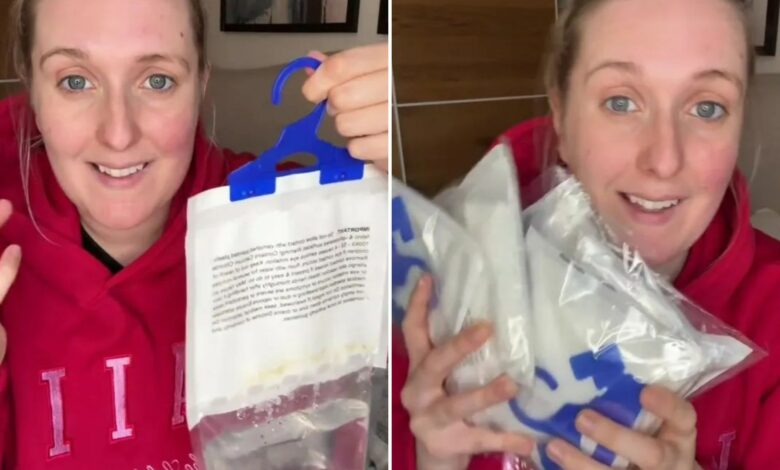The £1.50 purchase that sucks moisture from any room and fits into a cupboard

WHEN it comes to keeping condensation at bay, a dehumidifier is often the first choice.
However, they can be pricey, and in the current climate they are simply not affordable for many people.
So there are a few different budget alternatives doing the rounds, with one woman raving about a particular £1.50 product she’s found that fits even the smallest of spaces.
Jade held up the hanging dehumidifier and showed how much water it had collected, as she said in the video on her TikTok page: “Look everyone!
“If you haven’t used this before, just hang it in your house.
“You can put them anywhere.”
Read more Condensation Hacks
Although they were initially designed to fit in wardrobes, Jade said she also placed them on all curtain rails as they “take that extra moisture out of the room and that really helps protect your home”.
“All that extra moisture, if it wasn’t here, it would be in your house,” she said.
Jade added that the hanging dehumidifiers last about six weeks, and that she will use them until “when it starts to get a little warmer.”
“They are a really good alternative if you can’t afford to buy and use an electric dehumidifier,” she said, adding that she always buys them in bulk online because they are “such a good deal.” .
“If you’re not using this one yet, you should definitely check it out,” she concluded.
“These will help protect your home tremendously!”
“It’s shocking how much extra moisture there is in your house,” Jordan captioned the video.
“Make sure you protect it to prevent moisture and other problems.”
People were quick to comment on the video, with one writing: “Just ordered 48!
“Absolutely great devices, they really work.”
“They are brilliant – my son’s bedroom is so bad with them, collects so much,” added another.
“Glad they’re helping!” Jade replied.
Cheap Condensation Hacks
1. Use salt or cat litter
– Place bowls of salt or silica-based cat litter in areas that are sensitive to moisture. These materials are excellent at absorbing moisture from the air.
2. DIY dehumidifier
– Make a simple dehumidifier using a plastic container with a lid. Make holes in the lid, fill the container with silica gel or activated carbon and place it in damp areas.
3. Ventilate while cooking and showering
– Open windows or use exhaust fans when cooking or showering to allow moisture to escape. Even a small difference can make a big difference.
4. Wipe Windows clean
– Wipe windows and other cold surfaces regularly with a dry cloth to remove condensation. This prevents moisture from accumulating and causing mold.
5. Use houseplants
– Certain houseplants, such as lilies and spider plants, can help absorb moisture from the air. They also improve indoor air quality.
6. Keep lids on jars
– Keep lids on pots and pans while cooking to reduce the amount of steam released into the air.
7. Dry clothes outside
– If possible, dry clothes outside or in a well-ventilated area, rather than using indoor drying racks.
8. Open curtains and blinds
– Open curtains and blinds during the day to allow sunlight to warm the windows and reduce condensation. Sunlight also helps reduce mold growth.
9. Use towels wisely
– Keep towels and other fabrics away from walls and windows to prevent them from absorbing moisture and becoming damp.
10. Seal cracks and holes
– Use inexpensive weatherstripping or caulk to seal any cracks or holes around windows and doors. This helps keep cold air out and warm air in, reducing condensation.
“Are these leaking?” someone else asked.
“The last one I bought leaked everywhere!”
To which Jade replied: “No, none of mine have leaked and I’ve been using them for years.”




